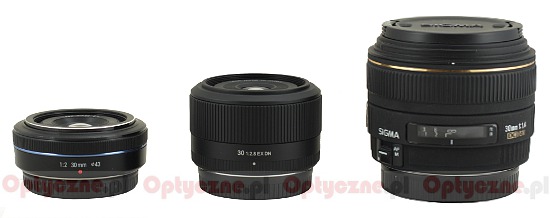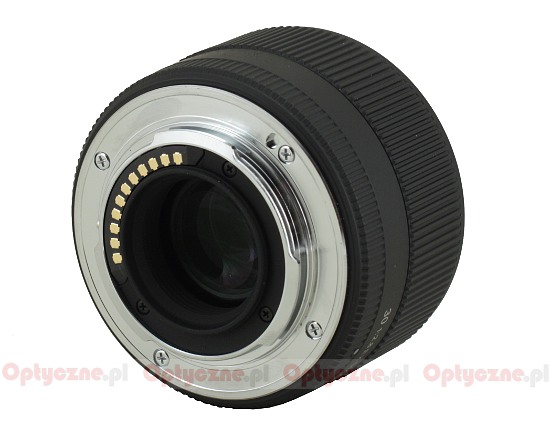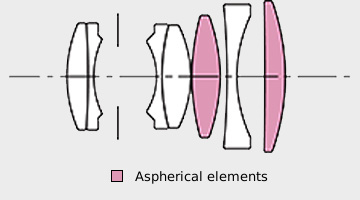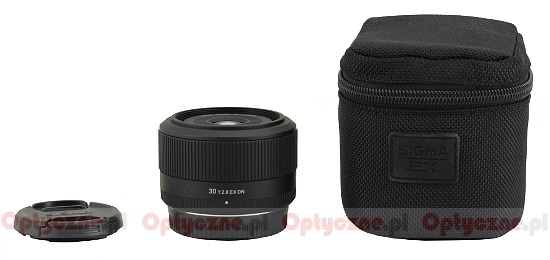Sigma 30 mm f/2.8 EX DN
3. Build quality
In the photo below the tested Sigma 2.8/30 is positioned next to the Samsung NX 2/30 and the Sigma 1.4/30. All of these instruments are designed for an APS-C sensor.
 |
Please Support UsIf you enjoy our reviews and articles, and you want us to continue our work please, support our website by donating through PayPal. The funds are going to be used for paying our editorial team, renting servers, and equipping our testing studio; only that way we will be able to continue providing you interesting content for free. |
- - - - - - - - - - - - - - - - - - - - - - - - - - - - - - - - - - - - - - - - - - - - - - - -
The Sigma starts with a metal mount with contacts. The mount surrounds a rear element, about 2 cm in diameter, and is hidden ca. 1 cm deep inside the casing.
 |
The casing itself is very ascetic. First you see a narrow, immobile and ribbed ring behind which there is a smooth part with the name of the lens, its serial number and the focusing mechanism range. The next part is a manual focus ring. It is almost 18 mm wide and is covered by rubber ribs. It works with new linear AF motor without the need of gears – after detaching the lens from the body the movements of the ring don’t make elements change their position. When attached to a camera and set in the manual focus mode the ring is well-damped and allows you precise settings. Running through the whole distance scale takes a turn through about 140 degrees.
The focus ring is the final element of the lens. In the front there is also a non-rotating filter thread, 46 mm in diameter, which is surrounded by an inscription with the name of the lens and the information that it was produced in Japan. The front element is immobile and small – its diameter amounts to just 7 mm.
It is a pity the Sigma constructors didn’t include some space for a distance scale and a depth of field scale on the casing. A fixed-focal lens of this class could really do with both of them.
When it comes to the inner construction we deal here with 7 elements positioned in 5 groups. Two elements are aspherical. Inside there is also an aperture with seven diaphragm blades which can be closed down to the value of f/22.

Buyers get both caps and a stylish case in the accessory kit.
 |






